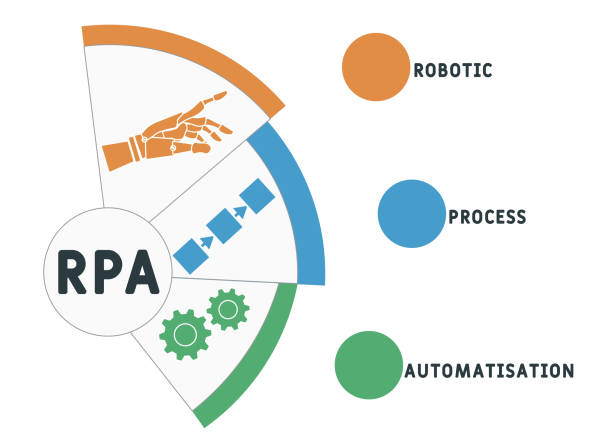
Today, there is a gamut of complex regulations that banks and financial institutions have to follow. Given that regulatory requirements are constantly changing, organizations are forced to spend inordinate amounts of resources to stay compliant. With every regulatory change, many of the companies’ processes must be readjusted, further prompting banks to invest more in compliance management. This is where the expertise of a robotic process automation service provider becomes invaluable.
RPA can help financial organizations to achieve significant cost savings. Given that the majority of risk and compliance processes are rule-based, have few exceptions, and are supported with structured documentation, regulatory compliance becomes one of the most lavish candidates for robotic automation.
In this article, we will discuss how financial institutions can start using RPA to streamline their compliance and risk management processes.
Top 5 applications of RPA for compliance
Optimizing fraud management
While some wrongdoers are coming up with new ways to commit fraud each and every day, others rely on old and well-documented ways of scamming banks and their customers. For example, stealing one’s debit card and trying to make a purchase in a different country is one of the oldest tales for any bank. An RPA bot can easily identify this and many other fraudulent schemes. By analyzing transaction histories and customer behavior patterns in real-time, RPA can quickly identify suspicious activity and alert relevant employees.
Importantly, every fraud case has to be documented according to the regulatory requirements set in a specific jurisdiction. RPA bots can automatically collect relevant information and compile it into reports for both auditors to review.
Streamlining customer onboarding and due diligence
A reliable process for establishing customer identities is paramount for any financial institution. When a new customer wants to open an account, employees have to manually collect information like passports, driver’s licenses, and social security numbers and then verify data from governmental and law enforcement organizations. Since banking is steadily becoming more accessible, most financial institutions process more customers than ever before.
Moreover, banks are also required to perform KYC checks on a regular basis, constantly reviewing and updating the data about customer creditworthiness, identity information, and business activities in CRM.
RPA can automate all these labor-intensive and error-prone tasks. RPA bots can automatically gather information about the customer, verify it against established external sources, and generate reports.
Automating reporting
Regardless of the jurisdiction, financial institutions all over the world are required to submit various daily, weekly, monthly, and yearly reports for external and internal audits. For example, most banks are ordered to generate daily liquidity coverage reports on a daily basis.
Given that report generation is a largely predictable and straightforward process, it’s still one of the most popular processes targeted by robotic process automation. RPA bots are exceptionally good at aggregating, validating, formatting, and compiling data from multiple sources, including external databases and websites. Notably, RPA bots leave a clear audit trail of their activities, which makes it much easier for banks to undergo audits and trace errors.
Mitigating data privacy risks
It’s safe to say that data privacy remains one of the biggest regulatory concerns worldwide. Financial institutions are especially prone to regulatory scrutiny as they handle highly sensitive personal data and customers’ financial information. In the banking context, safeguarding customer data is not only a matter of regulatory compliance but also an important way for financial institutions to maintain the trust of their customers.
RPA can help banks automate both data anonymization and encryption, ensuring that no one of the bank’s employees can access sensitive data like bank account details and various personal identifiers. Most importantly, with RPA at hand, every stage of collecting and formatting data is also automated, meaning that customer information is handled without human intervention.
How to approach RPA implementation?
While, in theory, RPA provides an extraordinary number of benefits, its potential can be hindered by careless implementation. When automation is integrated into such important processes as compliance, given the repetitive nature of these tasks, any mistakes in automaton logic can escalate and lead to serious brand and financial damages for the organization. To mitigate some of the common risks associated with RPA implementation, consider the following tips:
- Follow an existing risk management methodology. Most banks and financial institutions already have an established IT risk framework. This approach to risk management should serve as a basis for defining and implementing an automated risk framework enabled by RPA. In other words, reassessing existing foundational policies and standards that concern risk management should be the first step toward RPA implementation.
- Make RPA flexibility a priority. Given that the regulatory landscape is in a state of constant flux, it’s paramount to ensure that RPA systems are flexible enough to accommodate these changes. Ideally, there should also be a well-defined framework for staying on top of the latest legal standards. In fact, RPA systems augmented by machine learning and natural language processing can routinely scour the web for changes in the regulations.
- Scale gradually. While it may be tempting to automate many processes at once, it’s generally better to start small and increase the number of RPA use cases and start reskilling the employees as you gain confidence in the technology and can objectively assess its impact.
RPA undoubtedly holds immense transformative potential for streamlining regulatory compliance and risk management in the financial industry. Due to its ability to proficiently handle structured and documentation-intensive processes, RPA is one of the most effective technologies for handling compliance tasks. Squeezing most of this technology in the banking context is a matter of having a holistic approach to implementation.


































